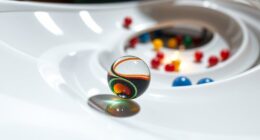When choosing toys for preschool kids, pick age-appropriate items that meet safety standards. Look for labels indicating suitability for your child’s developmental stage and avoid toys with small parts, sharp edges, or removable pieces that could pose choking risks. Always inspect toys regularly for damage or wear and choose non toxic materials to prevent harmful exposure. Ensuring toys are sturdy and properly suited for their age helps create a safe, fun environment—keep exploring to learn more about safe play.
Key Takeaways
- Choose toys labeled for preschool age to ensure appropriate size, complexity, and safety features.
- Avoid small parts or removable components that pose choking hazards for young children.
- Select non toxic, durable materials to prevent exposure to harmful chemicals and ensure longevity.
- Regularly inspect toys for damage or wear that could create safety risks during play.
- Supervise play to teach proper use and prevent unsafe behaviors or ingestion of non-edible items.

Are you confident that the toys your children play with are safe? It’s essential to consider the materials used in their toys. Opt for toys made from non toxic materials to ensure your child’s safety. Many toys contain chemicals or dyes that can be harmful if ingested or if they come into contact with your child’s skin. Choosing products labeled as non toxic minimizes the risk of exposure to dangerous substances, giving you peace of mind as your little one explores and learns through play. Additionally, pay close attention to the size and shape of toys to prevent choking hazards. Small parts or toys with removable pieces can pose a serious risk for preschool children, who tend to put things in their mouths. Always check age recommendations on packaging to see if a toy is suitable for your child’s developmental stage. For younger preschoolers, avoid toys with tiny parts, and regularly inspect toys for breakage or wear that could create new choking hazards.
When selecting toys, consider those that are sturdy and well-made, with secure parts that won’t easily come apart during play. This reduces the chance of your child swallowing or inhaling small fragments. Keep in mind that even seemingly simple toys like plush animals or building blocks can present risks if they’re not designed with safety in mind. Read labels carefully and choose items from reputable brands committed to safety standards. If a toy has small buttons, beads, or decorative elements, make sure these are firmly attached and unlikely to fall off during vigorous play. It’s also a good idea to periodically inspect the toys your child uses most often, replacing any that show signs of damage.
Furthermore, understanding fokos can help you stay informed on safety standards and best practices for toy selection. Creating a safe play environment involves more than just choosing the right toys; it’s about actively monitoring and guiding your child’s play. Encourage them to use toys as intended, and teach them to avoid putting things in their mouths if they’re not meant to be ingested. By prioritizing non toxic materials and avoiding choking hazards, you help protect your preschooler from potential injuries and health issues. Remember, safety doesn’t mean limiting fun—it means making smarter choices so your child can enjoy their toys safely and confidently. Taking these simple precautions ensures that playtime remains a positive experience, fostering growth, creativity, and safety every step of the way.
Frequently Asked Questions
How Do I Identify Choking Hazards in Toys?
To spot choking hazards in toys, you should practice choking hazard awareness by inspecting small parts or pieces that could fit into a child’s mouth. Always check toy safety labels for age recommendations, which help identify suitable toys and avoid unsafe ones. Keep an eye out for loose parts, buttons, or tiny accessories, and regularly examine toys for damage or wear that could create new hazards. This proactive approach keeps playtime safe.
Are Secondhand Toys Safe for Preschoolers?
Think of secondhand toys as treasure chests—exciting but sometimes risky. Secondhand concerns include hidden hazards like loose parts or bacteria. To keep preschoolers safe, always sanitize toys thoroughly before handing them over and check for damage or missing pieces. Proper toy sanitization transforms potential risks into safe playtime, making secondhand toys a fun, eco-friendly option that’s just as safe as new ones.
What Certifications Indicate a Toy Is Safe?
You want to know what certifications show a toy is safe. Look for clear toy labeling that indicates compliance with recognized safety standards, like ASTM F963 or the European EN71. These certifications mean manufacturers tested the toy for hazards like choking, toxicity, and sharp edges. Always check for labels from reputable organizations, ensuring the toy meets safety standards and is suitable for preschool kids, giving you peace of mind.
How Often Should I Inspect Toys for Damage?
You should inspect toys for damage weekly to guarantee safety. During your toy storage and cleaning routines, look for cracks, loose parts, or sharp edges. Regular checks prevent potential hazards and keep toys in good condition. If you find any damage, remove the toy immediately. Establish a routine that includes cleaning and inspecting toys, so your preschooler always has safe, fun options and hazards stay minimized.
Are Electronic Toys Safe for Preschool Children?
You might wonder if electronic toys are safe for preschool children. Generally, they can be, but you should prioritize battery safety by ensuring batteries are secure and inaccessible. Also, check that the toy material safety is up to standard, avoiding small, removable parts that could pose choking hazards. Always supervise play, and choose age-appropriate electronic toys that meet safety standards for your child’s protection and enjoyment.
Conclusion
So, next time you pick out a toy, remember that what’s “safe” today might turn into a choking hazard tomorrow. It’s almost funny how something so simple as age-appropriateness can prevent so many accidents. Embrace the irony—your careful choice keeps playtime fun and safe, proving that sometimes, the safest toy is the one you least expect to cause trouble. After all, a little caution now saves a lot of cleanup later!










